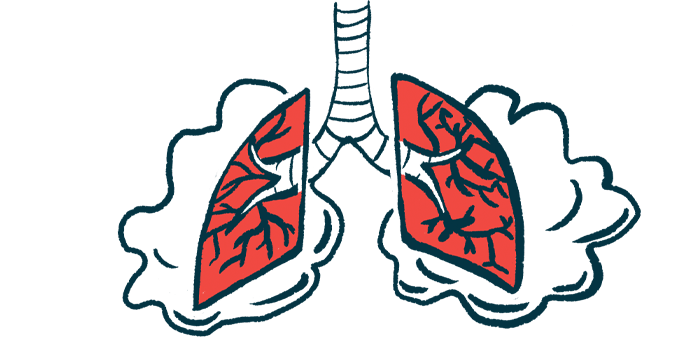Serious breathing difficulties lead to MG diagnosis in woman, 41
Case shows need to mull neurological factors with cardiac, respiratory issues
Written by |

Serious breathing difficulties, called acute respiratory distress, was the initial clinical manifestation of myasthenia gravis (MG) in a 41-year-old woman, who was described in a recent case study.
The woman went to the emergency room with severe breathing problems, progressive shortness of breath, coughing, and difficulty swallowing. She was subsequently diagnosed with MG and restrictive lung disease.
“This case highlights how important it is to consider neurological variables when [shortness of breath] cannot be explained by cardiac or respiratory problems in acute situations,” a group of India-based clinicians wrote. “Emergency clinicians need to quickly identify MG and include it in the differential diagnosis when acute respiratory failure occurs, as prompt recognition and treatment are crucial for improving patient outcomes.”
The study, “Atypical Presentations of Myasthenia Gravis as Acute Respiratory Failure: A Rare Case,” was published in Cureus.
MG is an autoimmune disease that occurs when the immune system attacks proteins needed for nerve-muscle communication, leading to symptoms of progressive muscle weakness and fatigue. Ocular, or eye-related, problems are often the first sign of MG. Respiratory problems driven by weakness in the muscles that control breathing may also occur, especially at more advanced stages.
Testing lung, heart function
Here, clinicians from the Datta Meghe Institue Of Higher Education and Research in India described a patient whose first symptoms were related to severe breathing difficulties.
The woman went to the emergency room to seek treatment for cough and shortness of breath; she was unable to complete a sentence in one breath.
Her shortness of breath appeared gradually, but became progressively worse, leading to her being given a score of 4 on the Modified Medical Research Council Dyspnea Scale, which corresponds to severe functional disability due to shortness of breath.
The woman also had difficulty swallowing and a fever of 38.6 C (101.5 F).
Imaging tests to assess her lung function revealed segmental atelectasis, or a collapse of part of her lung. An electrocardiogram showed that her heart was beating unusually fast. Other tests were normal and the clinicians investigated whether her difficulty breathing was caused by a neurological disease.
A nerve conduction test, which is used to identify MG, revealed that the woman’s nerve-muscle communication was disrupted in the nerves connected to muscles in her elbow, forearm, wrist, and fingers. As part of the test, small pulses of electricity are sent through electrodes placed on the skin to stimulate nerves and the ability of those nerves to transmit electrical signals to muscles is assessed. Communication impairments were also found in the nerves connected to the lower leg, foot, and toes.
The woman also had sensory issues related to the nerves running along her elbow, forearm, wrist, and fingers.
A check of the woman’s antibody levels showed she was positive for self-reactive antibodies targeting the acetylcholine receptor (AChR), the most common type of autoantibodies seen in MG patients. She was diagnosed with MG and started on pyridostigmine, which is sold as Mestinon and commonly used to treat the disease.
The woman was admitted to the intensive care unit and given additional respiratory support and other treatments to ease hypoxia, or low levels of oxygen in the bloodstream. The woman, was also diagnosed with restrictive lung disease, based on the lung function tests, responded well to treatment and recovered.
“Our case highlights the significance of taking neurological factors into account in the acute context when [shortness of breath] cannot be attributed to cardiac or respiratory causes. When acute respiratory failure occurs, emergency physicians must promptly recognize MG and include it in the differential diagnosis,” the clinicians wrote.







Leave a comment
Fill in the required fields to post. Your email address will not be published.